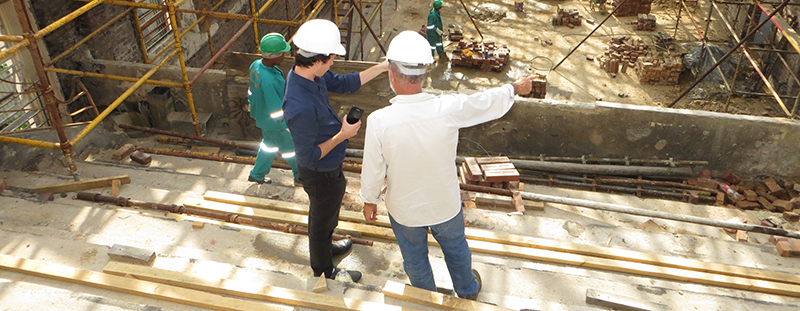It’s one thing to manage workers when they’re all in the same place at the same time. However, when you run a construction business with field workers, things can get a lot more challenging. Not only are you typically not on the same job site as them, you might also have workers scattered over a variety of sites and projects. Managing them doesn’t just mean scheduling them and making sure they’re progressing on the project, but also knowing how to shift people and equipment between sites to boost productivity.

Here are 3 things you can do to effectively manage field workers in your construction business:
1. Be clear on your expectations
One of the most challenging parts of having field workers is when people don’t know what’s expected of them. They might understand what their job is—and be perfectly capable of carrying out it—but less clear on their level of autonomy.
For example, under what circumstances do they need to consult you, versus when can they make executive decisions on their own? Is there someone on each job site who acts as team lead or are they all given the same level of authority? Who is the superintendent, if there is one? How frequently should they communicate with you about progress and what information do you need? What are the milestones they need to meet and when do they need to meet them? What are your responsibilities to the workers on the job site?
Giving your field workers a clear idea of your expectations makes it easier for them to react to situations in the moment, rather than wondering if they need to contact you. It also provides them with a framework for carrying out their duties. Finally, it reassures them that there are expectations of you that you’ll meet as well, such as ensuring they have the right tools for their jobs.
2. Upgrade your tools
Many construction companies still use manual processes, such as telephone calls, to share information. These manual processes require you to review large volumes of paperwork and take up a lot of your time just to keep up-to-date on what’s going on. With multiple job sites, the task can become unmanageable.
These days, there are various technologies and platforms that can be used to share information and communicate with field workers. You can send tasks to field workers, ask them to capture data and share virtual paperwork in real time.
The information is shared much more easily and efficiently, and cuts down on the risk of missing paperwork and other errors. It also provides you with a complete audit trail, so you have proof of your company’s activities, in case there are ever any questions.
3. Engage workers
One of the best things you can do to manage field workers is ensure they all know they are part of the team and feel appreciated by you. This means being clear in your expectations, but also giving them the opportunity to offer feedback. Find out how you can support them. Provide group activities where the different teams are brought together to interact with each other and get to know one another.
Visit the job sites. You may sometimes have to check in to evaluate how things are going, but drop in periodically to check in with them without being there to review their performance. Ask what’s going well and what could use improvement. Listen to your field workers and if their suggestions are reasonable, consider implementing them. After all, they’re the ones in the field.
Final thoughts
Managing field workers can be complicated, especially if you have numerous teams at different locations. Being clear about your expectations, using the right tools and engaging your workers will help you more effectively manage them.
Learn more tips for optimising your business
There are many tricks to the trade, and if you want to make the most of them to grow your business, jump into our email newsletter:










